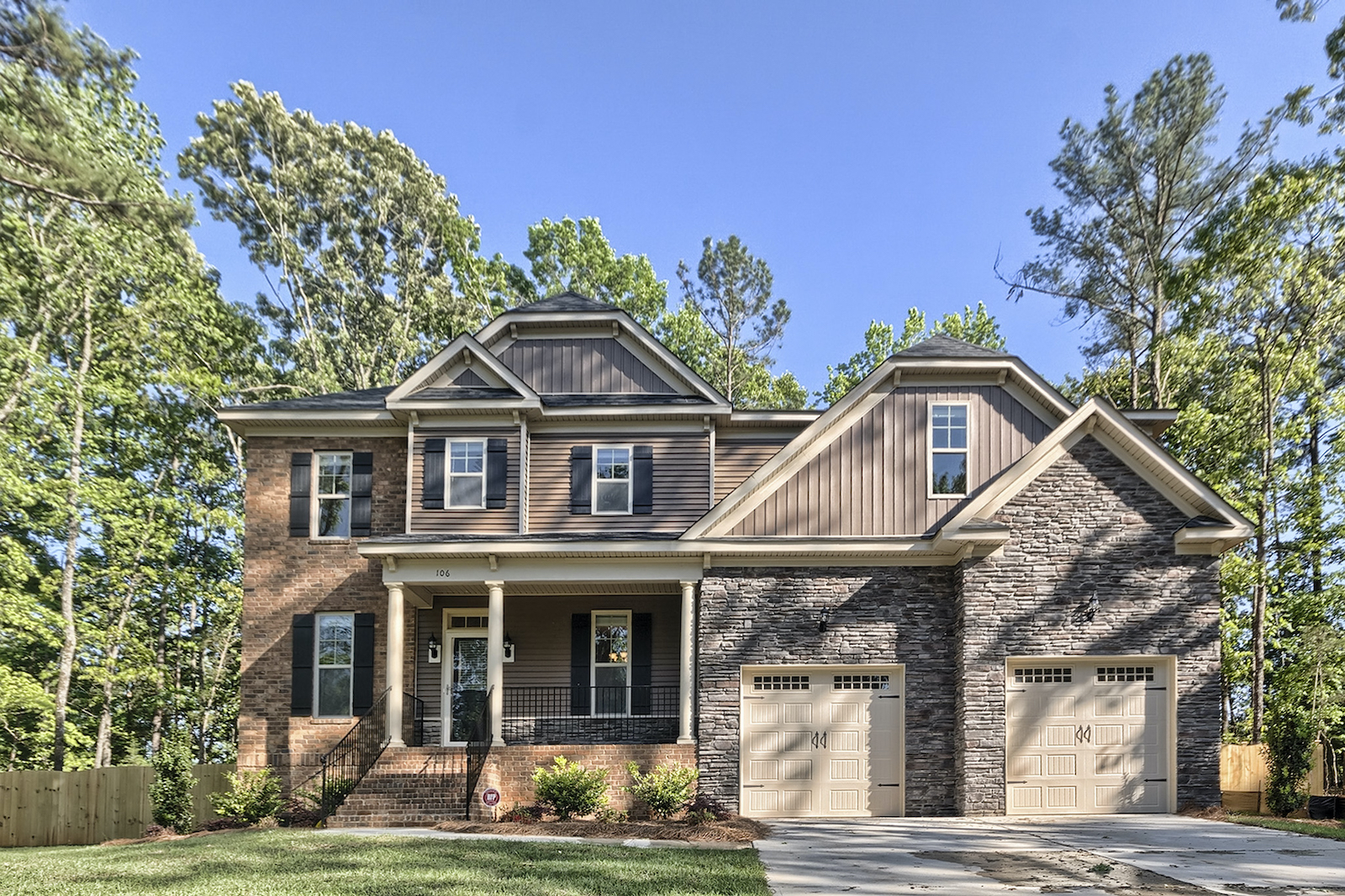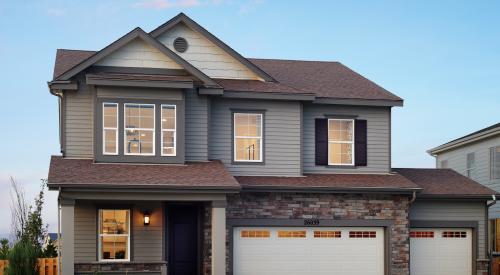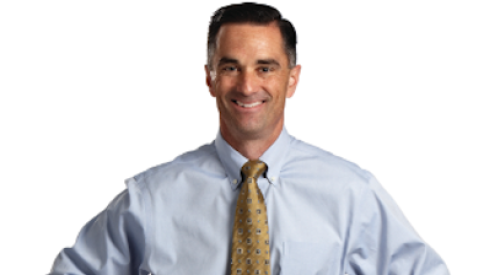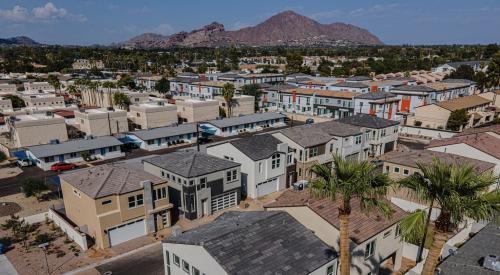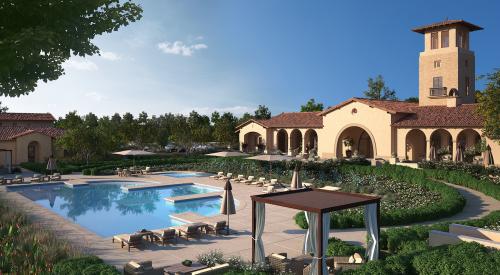 Great Southern Homes has increased sales by an average of 40% year over year since 2013 and is aiming to close 750 homes in 2017. Early during the recovery, the private builder expanded into new geographic markets—Aiken, Sumter, Florence, and Greenville, S.C., and Augusta, Ga.—and built products that targeted buyers beyond its entry-level core. Its GreenSmart program tapped into homebuyers’ utility-bill anxiety by comparing the annual energy cost of a Great Southern home with two-, five-, and 10-year-old houses, guaranteeing to refund customers the difference if energy use exceeds the annual estimate.
Great Southern Homes has increased sales by an average of 40% year over year since 2013 and is aiming to close 750 homes in 2017. Early during the recovery, the private builder expanded into new geographic markets—Aiken, Sumter, Florence, and Greenville, S.C., and Augusta, Ga.—and built products that targeted buyers beyond its entry-level core. Its GreenSmart program tapped into homebuyers’ utility-bill anxiety by comparing the annual energy cost of a Great Southern home with two-, five-, and 10-year-old houses, guaranteeing to refund customers the difference if energy use exceeds the annual estimate.
Q: During the recovery, many builders focused on upscale move-up and retreated from other market segments and price points. Why did Great Southern Homes target multiple segments and price points?
A: In 2008, 2009, and 2010 when the banks were pulling back on lines of credit, we made a conscious decision to return to our roots and stay in a price point that ended up being below the market here. Columbia is divided into the top four market quadrants. We have Lake Murray on one side, which is 50,000 acres, and Fort Jackson on the other side, which is 50,000 acres, and we have a river that runs right through the middle, so there are four distinct quadrants. Three of them are normally pretty good, and one is better than the others. We ended picking up the northeast Columbia market where I had my office. We tried to stay in the $150,000 to $160,000 price point, while most of the builders around here went up between $200,000 and $300,000.
I had lots where I already planned to build at the lower-end price point, so I was more or less stuck in that range. Then in 2012 the banks started getting friendly and that allowed us to go out and buy lots in competitors’ neighborhoods. That’s when we were really able to go out, explore, and do different price points.
Some of the markets around South Carolina aren’t big enough for the national builders to get into, but they’re a sweet spot for our price point. You’re not going to sell a lot of $300,000 houses, but you can sell plenty at $175,000. That propelled us to go into those neighboring markets. We got our feet on the ground in places about an hour from our office, and then we branched out to 2 ½ hours away.
Now that we’re at the coast, we have to go to $300,000 to $350,000. Ten years ago we were at a $135,000 average when I built 600 homes. We’ve gone up about $10,000 a year, so we’re at a $200,000 average today. Because of the lots we own, we’re kind of stuck building at a certain price point in those subdivisions. But now that we have a sprinkling of homes in higher-end communities, we’ve been able to move the price point up and still be below our competitors.
If you take the 10 largest home builders in South Carolina, public and private, we have the second lowest price point average. We can still build affordable housing, make a margin, and sell homes in the high $130s, which is difficult for the national builders to do. They’re talking about getting back into the first-time market. We’re still in it, but we also diversified with first move-up and retirement.
Q: To what do you attribute your ability to diversify?
A: We’re good at what we do. To me, this isn’t a difficult business, except for the land purchasing part. As far as construction, my dad cut his teeth on industrial power plants and waste-generation power plants. Building a 2,000-square-foot house over and over ... I’m not going to say it doesn’t take expertise, but once we do it, design it, and get it down, and get our sub base, we just keep trying to duplicate. We have a core group of people that I kept during the downturn and then I rebuilt my company with newer, better talent than I had 10 years ago.
Q: How did you streamline your company to make it nimble as it grew?
A: Because we had to go 2 ½, almost 3, hours to some of these outer markets, we had to rely on more local contractors and sales agents. We ended up opening offices to have more of a local presence, which also let the trades and salespeople we’re working with know that we’re here to stay. We came into Greenville and Spartanburg and the first year we did 20 to 25 homes. The second year we did 75, and next year and the year thereafter we’ll be able to continue to double our growth in some of these markets. People understand that we're not an out of town guy. We do things locally. I’ve been able to hire 10 people who live up there, and when they ask me to donate money to their kids T-ball team or soccer team, things like that, we do it. We want to make sure everybody knows we are there to stay.
Q: As you expanded did you have challenges with labor availability?
A: I’ve been loyal to my better subcontractors and kept them going through the downturn. I already knew they were good at what they did and as we continued to grow, they were outsourcing and managing some of their subcontracting base to keep up. If you’re a good company, you can attract good talent in the future even if you have to shrink for certain periods of your career. We were able to keep good people in business and it paid off. They’re loyal to me now, and they’re still able to give me good prices and keep me competitive. They don’t want to go work for the national companies because they know they won’t get treated the same way.
Q: How did Great Southern come upon the idea of marketing Green Smart Home by comparing the energy savings with older homes?
A: We found a company that does the Honeywell Tuxedo Touch system. It’s a keypad that links to devices with Z-wave technology to control lighting, air conditioning, garage door, and other devices and functions. That’s the smart part. As far as the green part, we’re trying to get a HERS rating, so they judge the home’s energy efficiency rating with the building code. My models are twice as good as code and most of the other houses are in the 60 to 70 range compared to code, which is 100. The idea is to get down to net zero, so every 10 points you take out of a house, it cuts your utility bill by X amount of dollars. I think South Carolina is pretty far behind while a state like California by 2020 is going to be net zero, which is phenomenal. You have to have solar panels to get to zero, but just by changing the insulation value on the exterior of the house, putting on a radiant barrier, or by putting on some foam—you don’t even have to foam the entire house—we’re trying to take the low hanging fruit that is affordable for our customers and do the things that will give them the biggest return for their initial investment.
Q: What are your buyers responding to, the energy savings or the benefits for the environment?
A: Buyers mainly respond the energy savings. We’ve got 4,000-square-foot houses that some of our employees have built to live in and they tell us they have a $150 utility bill. I redid a house down in the coast; it’s about 3200 square feet. When I bought the home during the summer it had an $800 utility bill. I took it to the studs, foamed it, put in better equipment, Now for summer time utility bill is like $250 and when I’m not there it’s like $60. We have a program where we guarantee your utility bills, which people like also. It’s based on how their new home is constructed and how many people live in there. It gets rated and the insurance company guarantees that the utility bill won’t be above X amount of dollars for that house.
Q: What’s next for Great Southern in 2017?
A: We’re going attached housing in some of these more inflated price areas because we can get our lot cost and our product offering at a less expensive price on the for-sale-side of it. We can go into Charleston and produce a 1,600-square-foot townhome and sell it for $145,000. That’s hard to do in Charleston. There is segment of buyers that doesn’t want to take care of their yards and want maintenance-free housing, so we’re trying to hit that price point. I never built a lot of brick homes in the day, and I never really built a basement homes, but that type of builder was wiped out during ’09, ’10, and ’11, and we picked up a lot of properties where we’ve gone in and built brick patio homes and basements because the lots that were left over were ones that the normal builder wouldn’t take a chance to build on. So that’s been a different market for us.
The student housing, that is kind of my baby. I’ve gone up to Clemson University to start with, I’m a graduate of there; they have a pretty good football team, so I like being around them. I’ve been watching that market and if you look at some of the student housing companies, they were doing very well in the recession when every one else was doing terriblly. Some of these guys started their company in ’04, '05 and rolled right through the recession and never really felt that there was a home building recession. I just figured, I wanted to have some future assets that I can keep for myself because we can go out there and build 1,000 homes and make a little bit of money on each one of those, but the next year I’ll have to do the exact same thing to make it. So I just decided to get into this business. I bought apartments, renovated apartments and build new stuff from the ground up.
